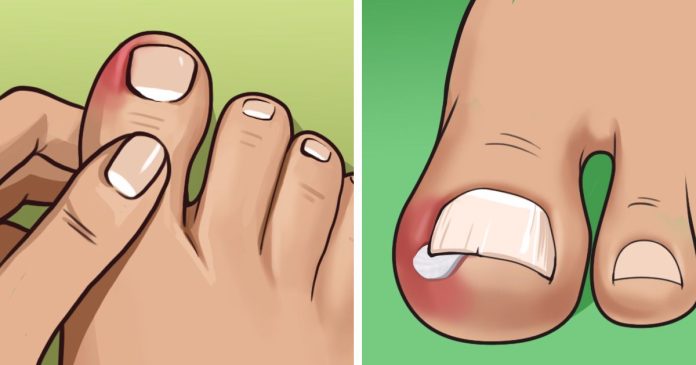Find out what causes ingrown toenails and how to get rid of them at home.
Ingrown toenails are painful. If left untreated, they can become red, painful and inflamed, and then become infected. Of course, you need to take care of your toes and toenails, but what can you do?
Doctors are expensive, so if you can avoid going to the doctor for an ingrown toenail, that’s money in your pocket. Learn about the four causes and five treatments for ingrown toenails below.
Causes.
Tight shoes.
Wearing shoes that are too tight on the nail can cause the nail to dig into the flesh. According to the Mayo Clinic, frequent wearing of shoes that are too tight can cause ingrown toenails.
straight lines, shortened
Another cause of ingrown toenails is the way nails are cut. Cutting them short or straight can cause problems.
curvature.
If your nails are abnormally curved, you are more likely to get ingrown toenails, according to Medical News Today.
damage.
The nails that protect your toes don’t like to be treated roughly. Any action that damages the nail can lead to an ingrown toenail.
Treatment
soaking.
According to Dr. Axe, the first thing to do is soak your toes in warm water for 15 to 20 minutes, three to four times a day.
Lifting them.
To prevent the nail from festering, or if it already has, try lifting the toenail after soaking. The Mayo Clinic recommends placing cotton or waxed dental floss under the nail and keeping it lifted off the foot. It should be changed regularly. Covering with an adhesive bandage is also effective.
application of an antibiotic ointment
Applying an antibiotic ointment is another tip to protect the toes from infection.
let them breathe
Shoes that are too tight can cause ingrown toenails. It is therefore advisable to wear open or loose shoes. Medical News Today advises avoiding pointed shoes or those that pinch the foot because they are too small.
Do not cut.
Toenails should not be cut too long. Stretching them longer than normal will help control their growth.
Allow the toenail to be controlled. Knowing what is going on can mean the difference between pain and comfort, doctor visits and money in your pocket.
NOTE
It is no fun to take off your shoes at the end of a busy day and find that your toes, and for that matter your big toe, are sore and uncomfortable. You sit up and take a closer look. The skin around the nail’s edge is red, inflamed, and swollen. It is painful and tender to the touch. You have an ingrown nail, and like most people, the next three or four days will be filled with an arsenal of nail clippings, antibiotics, and dressings.
Alex Turnipseed, a medical assistant at Cedars-Sinai Urgent Care Centre, sees patients every month who complain of ingrown toenail symptoms. For some people, this painful affliction often recurs. He usually uses a special tool to cut the area of the ingrown toenail to heal it.










